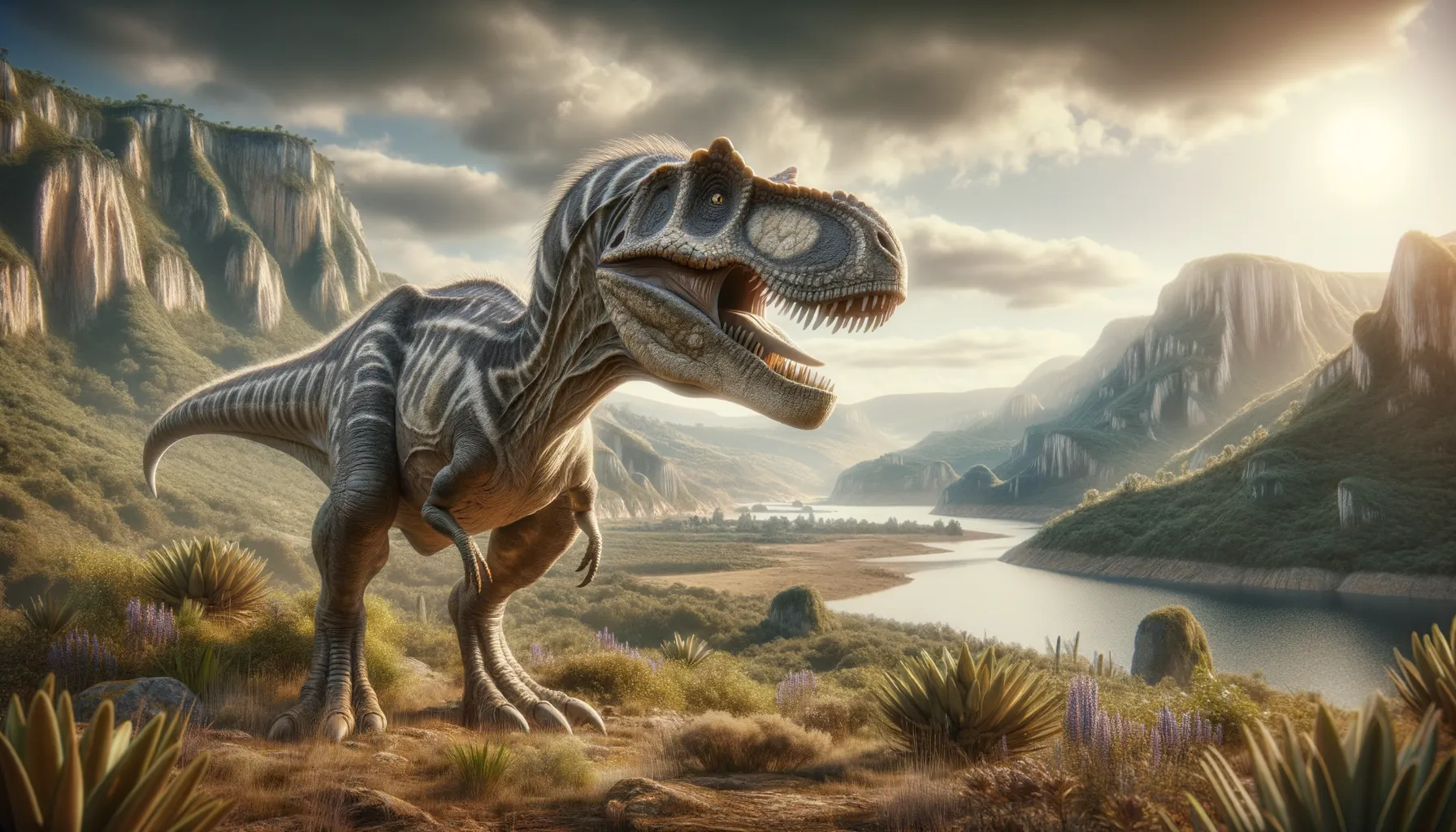
Lourinhanosaurus
Jurassic predator of the Portuguese plains.
Period
Jurassic
Length
Roughly 4.5 to 5 meters long.
Height
About 2 meters tall at the hip.
Weight
Approximately 300 kilograms.
Lourinhanosaurus was a medium-sized carnivorous dinosaur that lived during the Late Jurassic period. It roamed the lands that are now known as Portugal, displaying features typical of theropods such as sharp teeth and a bipedal stance. Its discovery was significant in understanding the diversity of European Jurassic predators and provides insight into the ecosystem dynamics during this era.
Diet
Lourinhanosaurus primarily fed on smaller dinosaurs and possibly scavenged carrion when available. Its sharp teeth and strong jaw muscles suggest it was well-adapted to a carnivorous diet.
Hunting
This dinosaur likely relied on ambush tactics or short chases to catch its prey. Its physical build indicates it was adept at quick, precise movements, allowing it to take advantage of opportunities in its environment.
Environmental challenges
Lourinhanosaurus lived in a dynamic environment prone to changes in resources. It faced competition from other predators, requiring adaptability in its hunting strategies. Seasonal variations might have influenced food availability, prompting it to adjust its diet as needed. Geological activity possibly altered the landscape, creating new habitats and challenges.
Speed
Moderately fast, suitable for short bursts.
Lifespan
Estimated at 20 to 30 years.
First discovery
Discovered in Portugal in 1982.
Fun Facts
- Lourinhanosaurus was named after the Lourinhã Formation in Portugal where its fossils were discovered.
- This dinosaur lived approximately 150 million years ago during the Late Jurassic period.
- Lourinhanosaurus was a carnivorous dinosaur, meaning it likely ate meat.
- It is estimated that Lourinhanosaurus could grow up to 15 feet long, making it a medium-sized theropod.
- The fossils of Lourinhanosaurus were first found in 1982 but were only formally described in 1998.
- Lourinhanosaurus is believed to have been a fast and agile predator, thanks to its lightweight body structure.
Growth and Development
The growth of Lourinhanosaurus from juvenile to adult likely involved significant changes in size and capabilities. Young individuals might have been more vulnerable to predation, requiring them to rely on cunning and speed. This dinosaur experienced a growth spurt during adolescence, reaching its full size swiftly compared to other contemporaries.
Habitat
It inhabited the coastal plains and forested regions of Late Jurassic Portugal. The environment was warm, with a mix of open areas and dense vegetation offering both hunting grounds and cover. Proximity to water sources likely played a role in its survivability and territorial range.
Interaction with other species
Lourinhanosaurus coexisted with a variety of other dinosaurs, including herbivores and fellow carnivores. It might have engaged in competition for prey, especially with similarly sized predators. Interaction with herbivorous species would primarily be in the context of hunting and predation.
Natural lifespan
Its lifespan was about two to three decades under natural conditions.
Reproduction
Lourinhanosaurus is believed to have laid eggs, as evidenced by nests discovered in Portugal. Parental care is hypothesized, potentially guarding the nests until the young hatched. Hatchlings, once emerged, would likely grow rapidly to increase their chances of survival.
Social behaviour
Evidence suggests that Lourinhanosaurus might have been solitary or formed small groups, especially during hunting or mating periods. Its social interactions were likely limited, focusing mainly on reproduction and possibly territorial defense.
Fossil locations
Fossils of Lourinhanosaurus have been primarily found in the Lourinhã Formation in Portugal. These discoveries include bones and fossilized nests, offering insights into its development stages and nesting behavior. The region's deposits have preserved a significant number of Late Jurassic fossils, painting a picture of its ecosystem.
